For English translation click here.
Charles Kean (1811-1868)
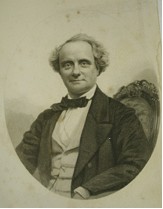
Charles John Kean fu un attore e manager teatrale, figlio di Edmund Kean e Mary Chambers. Ricevette una buona educazione scolastica e frequentò l’Eton College, da cui dovette però ritirarsi quando la fortuna del padre precipitò. Al momento della separazione dei genitori prese le parti della madre, venendo quindi completamente tagliato fuori dalla vita del padre, con cui riprese i rapporti solo verso la fine degli anni ’20. Charles tentò di basare la propria reputazione sul cognome che portava, ma, quando a sedici anni debuttò nel ruolo di Young Norval in “Douglas” di John Home, la ricezione non fu quella sperata e in seguito recitò poco in pochi ruoli (Achmet in “Barbarossa”, Frederick in “Lover’s Vows” e Lothair in “Adelgitha”). La reazione negativa derivò anche dal tentativo di modellare il proprio modo di recitare su quello del padre, che non aveva mai convinto pienamente parte del pubblico. Decise così di fare esperienza nei teatri di provincia prima di riprovare a conquistare il pubblico cittadino. Riconciliatosi con il padre, vi recitò assieme a Glasgow ed Edimburgo, dove ebbe finalmente le prime soddisfazioni. Tornato al Drury Lane, si esibì nei panni di Romeo nel dicembre del 1828, ricevendo critiche abbastanza negative. Tornò, senza gran fortuna al tour delle province e recitò per alcune sere con il padre a Cork e Dublino. Iniziò poi la sua carriera all’Haymarket il 6 ottobre 1829, nel ruolo di Reuben Glenroy in “Town and Country” di Thomas Morton; seguirono due notti in cui recitò in “The Iron Chest” di George Colman, con cui si aggiudicò finalmente anche a Londra pareri quantomeno positivi.
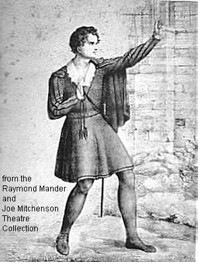
Nel 1830 si recò in America, dove ebbe un discreto successo nelle città maggiori. Tre anni dopo fece ritorno a Londra, trovando impiego presso il Covent Garden. Interpretò Hamlet per la prima volta il 25 febbraio, poi recitò in “Reputation, or, The State Secret” il 4 marzo, mentre il 25 marzo 1833, giorno dell’ultima performance del padre, recitò accanto a lui e alla futura moglie Ellen Tree/Desdemona nel ruolo di Othello. Recitò accanto a Tree anche nell’adattamento della nuova opera di Sheridan Knowles “The Wife” il 24 aprile dello stesso anno. Successivamente, Kean viaggiò nelle province e si ripromise di non tornare a recitare a Londra sino a che non gli fosse stato assicurato il salario di 50 sterline, il più alto raggiungibile in quel periodo. Verso la fine dell’anno, lui e Tree avviarono un tour in Germania, trovando ad attenderli un fallimento quasi totale. Fu durante questa esperienza che i due si fidanzarono, ma l’opposizione delle madri di entrambi impedì, in quel momento, il matrimonio. I due, secondo le fonti, non ebbero più contatti sino all’impiego all’Haymarket del 1840.
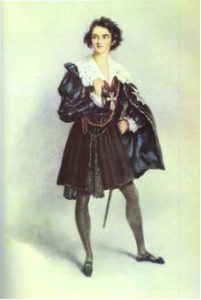
Kean continuò a conquistare il pubblico britannico a Dublino, Brighton, Liverpool, Birmingham e Edimburgo, divenendo uno degli attori preferiti dall’alta società, e guadagnandosi il patrocinio dei duchi di St Albans. Lavorò costantemente sul perfezionamento di Hamlet e le lodi della stampa londinese lo aiutarono ad alzare notevolmente il valore del suo ingaggio in città. Il primo a proporgli un contratto fu Macready, ma a Kean non allettava l’idea di porsi alle sue dipendenze. Accettò così l’offerta di Alfred Bunn, manager del Drury Lane, attirandosi però l’inimicizia di Macready. L’8 gennaio 1838 Kean ottenne uno straordinario trionfo nei panni di Hamlet e con quella performance si ritagliò un posto nel pantheon del teatro. Fu grazie a questo personaggio che si aggiudicò il favore della regina Vittoria e rinsaldò quello dell’alta società. Durante quel periodo recitò per quarantaquattro serate, ben ventidue volte nel ruolo di Hamlet, diciassette in quello di Richard III, cinque nel drama “A New Way to Pay Old Debts” e una come Shylock. Il suo Hamlet venne definito completo, legante e, quando necessario, ricco di energia, senza mai essere intaccato dalla vuota retorica. I suoi ruoli erano contrassegnati da finezza, dettagli realistici e una forza che veniva sempre e comunque modulata. L’approccio di Kean venne descritto come malinconico e filosofico, con lampi di passionalità.
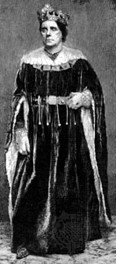
L’unica critica che gli veniva mossa riguardava alcune pause considerate troppo lunghe e il sentimentalismo lacrimevole, che evidentemente non gli si addiceva. Rimaneva comunque, secondo il Morning Post, la perfetta combinazione degli stili romantico e classico. Le uniche recensioni negative provennero da ambienti influenzati da Macready; ciò fece sì che, nonostante la grande reputazione che si era guadagnato, Kean non venisse re-impiegato durante il maggio successivo. Viaggiò nuovamente nelle province e recitò per una stagione all’Haymarket, mentre dovette rinunciare a un tour in America per motivi di salute. Fatto ritorno all’Haymarket, affiancò al suo ruolo canonico quelli di Macbeth e Richard III, che lo resero diretto rivale di Macready. Durante il tour provinciale, lavorò con Tree soprattutto nella messa in scena di “Romeo and Juliet”, che anticipò la versione dell’Haymarket del 1841, diretta da lui stesso. Tuttavia, Romeo venne fin da subito considerato un personaggio che mal si adattava alle sue qualità.
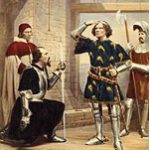
Il 29 gennaio 1842 sposò finalmente Ellen Tree; si trattava di un matrimonio singolarmente felice per l’epoca, che influì positivamente sulla carriera di entrambi e da quel momento in poi i due si esibirono insieme come “Mr and Mrs Charles Kean”. Kean rinnovò e variò il proprio repertorio per recitare accanto alla sua sposa, passando da ruoli romantici a quelli più realistici e moderati del domestic drama. Fu una scelta saggia, perché le sue qualità ben si adattavano a quel tipo di personaggi e di recitazione; tuttavia non abbandonò mai il teatro classico. La sua recitazione si basò da quel momento in poi sulla mitigazione della passionalità, sia nella voce che nei modi, proprio come si addiceva ai ruoli realisti. In questo periodo prese parte alle rappresentazioni di “The Lady of Lyons”, “The Stranger” e “The Gamester”, mentre sotto la sua direzione venne messo in scena “The Rose of Aragon” di Sheridan Knowles. Nell’anno successivo nacque l’unica figlia dei Kean, Mary. Il 20 gennaio 1844 presso il Drury Lane Kean portò in scena Richard III alla “maniera di Macready”, cioè con grande accuratezza filologica dei dettagli, dai costumi, al testo, alle scenografie. Esportò lo stesso modo di recitare anche fuori dalla città, prima con il tour delle province, che durò due anni, e successivamente con un viaggio in America, dove rimase per altri due anni, a partire dal settembre del 1845. Si occupò nel 1846 della produzione di “Richard III” e “King John” presso il Park Theatre di New York, ma nessuna delle due fruttò abbastanza, così Kean decise di concentrarsi su altre opere. Trovò infine quella giusta, “The Wife’s Secret” di George Lovell, di cui si occupò nell’ottobre del 1845 in America, che portò anche all’Haymarket nel gennaio del 1848 e che rimase nel suo repertorio fino alla fine della sua carriera e di quella della moglie.
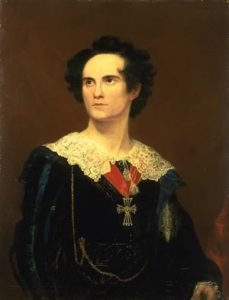
Il 1848 segnò per lui l’anno di svolta: venne infatti nominato Director of Royal Theatricals presso il Windsor Castle, come parte di un nuovo progetto atto ad assicurare il supporto della casa reale ai teatri. I Kean recitarono durante la prima stagione in “The Stranger” e nei più classici “Hamlet” e “The Merchant of Venice”. Mantennero la loro posizione fino al 1857 e Charles fu uno dei primi manager a traghettare il teatro vittoriano verso l’eccellenza che avrebbe poi col tempo consolidato. Negli anni tra il 1850 e il 1859 il Princess’s Theatre divenne, sotto la sua conduzione (e per i primi due anni con il co-management di Robert Keeley), il principale teatro londinese. Per aprire la stagione del 1852 scelse “King John”, ripetizione della spettacolare messa in scena che aveva tentato di far trionfare in America nel 1846. Il maggiore successo di quell’anno venne però segnato da un nuovo play, “The Corsican Brothers” di Dion Boucicault, di cui fu direttore e primo attore, che venne portato sul palcoscenico per ben 243 volte. “Much Ado about Nothing” e “The Merry Wives of Windsor” furono due degli altri grandi successi della stagione. Seguirono, nell’anno successivo, “Macbeth” e “Sardanapalus” di Lord Byron, il melodramma “Faust and Marguerite” e “The Courier of Lyons” di Charles Reade.
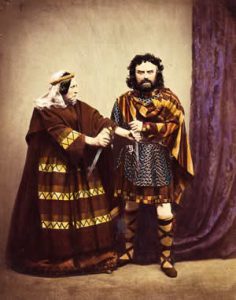
Nel 1854 si aggiudicò la guida del teatro e l’impiego della sua compagnia per altri cinque anni. Fu questo un periodo di grandi soddisfazioni, a partire dal 13 gennaio 1855, quando ricevette grandi e unanimi elogi per la sua interpretazione di Louis XI, che portò sul palcoscenico per novantuno volte e che rimase nel suo repertorio fino alla fine della sua carriera. Fu poi la volta di “Henry VIII”, il 16 maggio, in cui entrambi i Kean recitarono in ruoli nuovi, riscuotendo un enorme successo di critica e pubblico durante le cento notti di quella stagione, le cinquanta di quella successiva e le tredici dell’ultima presso il Princess’s Theatre. Il 28 aprile ci fu la prima di “The Winter’s Tale”, mentre il 1 settembre fu la volta di “Pizarro”, che venne portata in scena con grande accuratezza storica e dei dettagli. A queste si alternarono “A Midsummer Night’s Dream” (a cui i Kean non presero parte), “Richard II”, “The Tempest” e “King Lear”, che però non ebbe sul pubblico lo stesso positivo impatto che ebbe sulla stampa per le ambientazioni dark e quasi barbariche che aveva prediletto. Seguì perciò la rappresentazione vivace e magnifica di “The Merchant of Venice”, che venne resa ancora più verosimile dalla replica dei luoghi della città e che fu inoltre uno dei play più significativi della sua ultima stagione da manager di quel teatro. Proprio in quell’ultimo anno di direzione, subito dopo “The Merchant of Venice”, Kean portò sul palcoscenico più che altro riproposizioni di opere scelte, aggiungendo come novità solo “Henry V”. Nella sua ultima notte come manager del teatro, venne rappresentato uno dei suoi capolavori, “Henry VIII”; a fine spettacolo, Kean tenne un discorso di fronte al pubblico, ripercorrendo gli anni del suo operato e i suoi intenti manageriali.

La conduzione del Princess’s Theatre aveva sfiancato le finanze della famiglia e Kean cercò il successivo impiego pensando anche al profitto che avrebbe potuto trarne. I Kean si volsero alle province, dove riempirono i teatri nonostante gli aumenti di prezzo dei biglietti. Tuttavia, il mantenimento della compagnia comportava spese molto alte nonostante gli alti guadagni. Kean riuscì a farsi assumere per la stagione 1861-62 presso il Drury Lane e fece ritorno al Princess’s dal 10 luglio al 16 ottobre 1862. Successivamente, i coniugi decisero di avviare un tour all’estero, partendo dall’Australia e, dopo essere passati per California, Vancouver, Panama e Jamaica giunsero a New York, dove le loro performance vennero ritardate a seguito dell’assassinio del presidente Lincoln. Riuscirono a esibirsi il 26 aprile 1865 e in seguito viaggiarono per l’America e tornarono a New York, sul palcoscenico del Broadway Theatre, nell’aprile del 1866.
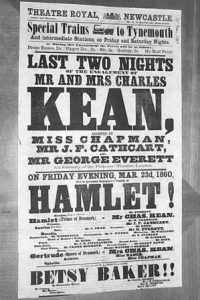
Rientrati a Londra, a maggio dello stesso anno, Kean venne eletto membro della Royal Geographical Society, mentre a giugno, insieme alla moglie, portò in scena al Princess’s Theatre “Henry VIII”, “Louis XI”, “Hamlet”, “The Merchant of Venice” e “The Jealous Wife”. A settembre cominciarono un nuovo tour delle province, dove, senza sorprese, riempirono i teatri. A partire dal gennaio del 1867 si recarono a Bristol, Bath, Edimburgo ed altre città. Infuse ai suoi ultimi ruoli un individualismo unico e complesso e li rese personaggi multi-dimensionali, realistici e ricchi anche nei dettagli fisici. Le sue performance erano ricercate ma scevre di inutili artifici formali, di troppa teatralità o di troppe convenzioni.
Riprese il suo ruolo di Louis XI a Liverpool il 28 maggio 1867 e fu proprio a seguito di questa performance che fu colpito da un infarto, dal quale non si riprese più. Morì il 22 gennaio 1868 a Londra, e venne seppellito nell’Hampshire, accanto a sua madre.
English Translation
Charles Kean (1811-1868)
Charles John Kean was an actor and a theatre manager, son of Edmund Kean and Mary Chambers. He received a good education and attended Eton College, however he withdrew from his studies there when his father’s luck turned for the worse. When his parents separated he took his mother’s side and his father cut him off, only reconnecting with him towards the end of the 1820s. Charles tried to base his own reputation on his family name but when he debuted as Young Norval in John Home’s Douglas, the reception was not what he’d hoped for and he later starred in few roles (Achmet in Barbarossa: A Tragedy, Frederick in Lover’s Vows and Lothair in Adelgitha; or, The Fruits of a Single Error). The negative reception was due, in part, to Kean’s attempts to emulate the acting method of his father, which never fully satisfied the audience. So, he decided to gain experience in small-town theatres before trying again to win over the public. After reconciling with his father, they performed together in Glasgow and Edinburgh, where he finally experienced his first success. He returned to Drury lane and stepped into the role of Romeo in December of 1838, with a quite negative reception. Down on his luck, Charles went back on the road, performing with his father for some nights in Cork and Dublin. He then started his career at the Haymarket Theatre on the 6th October 1829 in the role of Reuben Glenroy in Thomas Morton’s Town and Country, followed by two nights where he performed in George Colman’s The Iron Chest, which finally won him praise from London’s critics.
In 1830 Kean travelled to America, where he was quite successful. Three years later, he returned to London, finding employment near Covent Garden. He played Hamlet for the first time on the 25th February, then starred in Reputation, or, The State Secret on the 4th of March. On the 25th March 1833, at his father’s last performance, Charles performed alongside him and his future wife Ellen Tree (in the role of Desdemona), in the role of Othello. Charles also performed alongside Tree in Sheridan Knowles’ then-new production The Wife on the 24th April that same year. Later on he travelled through the provinces and vowed he would not return to act in London if he wasn’t guaranteed a salary of 50 pounds, the highest earnable wage at the time. Towards the end of the year, he and Tree started a tour in Germany, an ambitious task that was met with almost total failure. It was during this tour that the two got engaged, but the objection of their mothers prevented the marriage from taking place. It is said the two were no longer in contact up until they were both employed at the Haymarket Theatre in 1840.
Kean continued to win over the British audience in Dublin, Brighton, Liverpool, Birmingham and Edinburgh, becoming one of the upper class’ favourite actors and earning a sponsorship from the Duke of St Albans. He worked constantly on perfecting his act as Hamlet and the commendations of the London press boosted his offers for roles from valuable contacts. The first to offer him a role was Macready but Kean didn’t like the idea of being on his payroll. Instead he accepted an offer put forward by Alfred Bunn, manager of Drury Lane, attracting the ire of Macready. On the 8th January 1838 Kean’s role as Hamlet brought him considerable success; with such performance he earned his place in the theatrical hall of fame and it was thanks to it that he won the favour of queen Victoria,
which consolidated his fame among the upper class. During that period, he acted for forty-four nights: 17 as Richard III, 5 in the drama “A New Way to Pay Old Debts” and once as Shylock. His portrayal of Hamlet was described as accomplished, elegant, and, when the scene required it, full of energy, without being unnecessarily rhetorical. His roles were marked by finesse, realistic detail and an always varying vitality. Kean’s approach was described as melancholy and philosophical, with flashes of passion.
The only criticism that he received pertained to some of his pauses, considered to be too long, and a weepy sentimentalism which did not suit him. Nevertheless, they remained, according to the Morning Post, a perfect combination of romantic and classical styles. The only negative reviews appeared under Macready’s influence; despite the great reputation Kean had made for himself, the reviews made it so that he was not re-employed in May. He travelled once more through the provinces and performed for a season at the Haymarket Theatre, while he had to abandon a tour in America for health reasons. He returned to the Haymarket and to his usual roles performed as Macbeth and Richard III, which made him Macready’s closest rival. During the provincial tour, Kean worked with Tree mostly in the production Romeo and Juliet, which anticipated the Haymarket Theatre version in 1841 he himself directed. However, Romeo was immediately considered a character that did not fit his acting style.
On the 19th January 1842 he finally married Ellen Tree; it was a particularly happy marriage that had a positive influence on both their careers. From that moment on, the two performed together as “Mr and Mrs Charles Kean.” Kean revamped his repertoire so he could perform alongside his wife, passing over romantic roles in favour of the more realistic and mild interpretations of domestic drama. It turned out to be a good choice as his acting style fitted that type of characters; however, he never abandoned classical theatre. His acting was based on toning down his passionate acting both in voice and form to better adhere to more ‘realistic’ roles. During this period, he took part in performances of The Lady of Lyons, The Stranger, and The Gamester, while directing a production of Sheridan Knowles’ The Rose of Aragon. During the following year, Kean’s only daughter Mary was born. On the 20th January 1844 at Drury Lane he produced Richard III “in Macready’s style,” that is a philologically accurate production in terms of costumes, content and scenery. He then employed the same style also outside London: first in his two-year tour of the provinces and, later, in America, where he stayed for another two years, from September 1845. In 1846, he was in charge of the production of Richard III and King John at New York’s Park Theatre but neither proved successful, thus Kean decided to focus on other plays. He found a keeper in George Lovell’s The Wife’s Secret; he took charge of the production in October 1845 in the US and staged it at the Haymarket Theatre in January 1848. It remained a part of his repertoire until the end of his and his wife’s careers.
The year 1848 was a turning point for Kean: he was nominated Director of Royal Theatricals at Windsor Castle as part of a new project aimed at gaining the support of the royal family for theatres. The Keans performed during the project’s first season in The Stranger and in the classics Hamlet and The Merchant of Venice. Kean kept his position until 1857 and he was one of the first managers to propel Victorian theatre towards the excellence it would eventually attain. Under his management from 1850-59 (and with the cooperation of Robert Keeley for the first two years), the Princess’s Theatre became London’s leading theatre. In 1852, he opened the season with King John, a repetition of the spectacular production that he had tried to bring to success in America in 1846.
The big success of that year, however, came from Don Boucicault’s new play The Corsican Brothers, in which Kean was both actor and director, and that went on to show another 243 times. Much Ado About Nothing and The Merry Wives of Windsor were two of the other major successes of that season. During the following year, these were followed by Lord Byron’s Macbeth and Sardanapalus and Charles Reade’s melodrama Faust and Marguerite and The Counter of Lyons.
Kean was finally appointed manager of Princess’s Theatre and contracted his company from 1854-59. This was a period of great satisfaction for him, starting from the 13th January 1855 when he received unanimous praises for his interpretation of Louis XI, a role which he played 91 times and remained a part of his repertoire until the end of his career. Subsequently on the 16th May, both Keans interpreted new roles in the drama Henry VIII, which was a tremendous success for 100 nights in that season, 50 in the following season and 13 in the last at the Princess’s Theatre. On the 28th April, the first production of The Winter’s Tale took place; on the 1st of September Pizarro was staged with special attention paid to historical accuracy. They were alternated with productions of A Midsummer Night’s Dream (in which Kean did not take part), Richard III, The Tempest and King Lear, which unfortunately did not have the same positive impact on the public compared to the press due to the dark, almost barbaric settings that Kean favoured. Consequently, the following production to hit the stage was a vibrant, magnificent version of The Merchant of Venice with distinct attention to historical accuracy in the city scenes; it was one of Kean’s most significant works of his last season as manager of the theatre. On his last night, one of his masterpieces, Henry VIII, was put on stage and, at the end of the show, Kean gave a talk, recounting the years of his work and management at the theatre.
Managing the Princess’s Theatre exhausted the Kean family’s finances and so Kean looked for a different job that could be more profitable. The family once again looked to the provinces, where they fully booked theatres despite the rising ticket prices. However, maintaining the company was costing them a lot of money despite their high income. Kean managed to get hired at Drury Lane for the 1861-62 season and returned to the Princess’s Theatre from the 10th July to the 16th October 1862. He and his wife decided to launch a tour abroad, starting from Australia and, after passing through California, Vancouver, Panama and Jamaica, they arrived in New York, where their performance was delayed following President Lincoln’s assassination. They were able to perform on the 16th April 1865 and afterwards they travelled around the US and returned to New York on the Broadway Theatre stage in April 1866.
In May of that same year, upon the family’s return to London, Kean was chosen as a member of the Royal Geographical Society. In June, he and his wife put on performances of Henry VIII, Louis XI, Hamlet, The Merchant of Venice and The Jealous Wife. In September, they started a new tour of the provinces where, to no surprise, they sold out theatres. From January 1867 they travelled to Bristol, Bath, Edinburgh and other cities. Kean embodied each of his roles onstage with a unique and complex individuality, turning them into multi-dimensional characters, realistic and rich in both character and physical detail. His performances were refined but free of any useless formalities or theatrics.
Kean reprised his role as Louis XI at Liverpool on the 28th May 1867 and it was just after this performance that he suffered a heart attack from which he never recovered. He died on the 22nd January 1868 in London and was buried at Horndean, Hampshire, next to his mother.
Translated by Aisha Gueye
Revised by Dott.ssa Valentina Pramaggiore
Bibliografia
http://www.oxforddnb.com/view/article/15203?docPos=1 [M. Glen Wilson, ‘Kean, Charles John (1811–1868)’, Oxford Dictionary of National Biography, Oxford University Press, 2004; consultatoil 03/07/2016]
Joseph Donohue, The Cambridge History of British Theatre, Vol.2 (Cambridge, Cambridge University Press, 2004)
Moody J., O’Quinn D. (ed.), The Cambridge Companion to British Theatre 1730-1830(Cambridge, Cambridge University Press, 2007)
